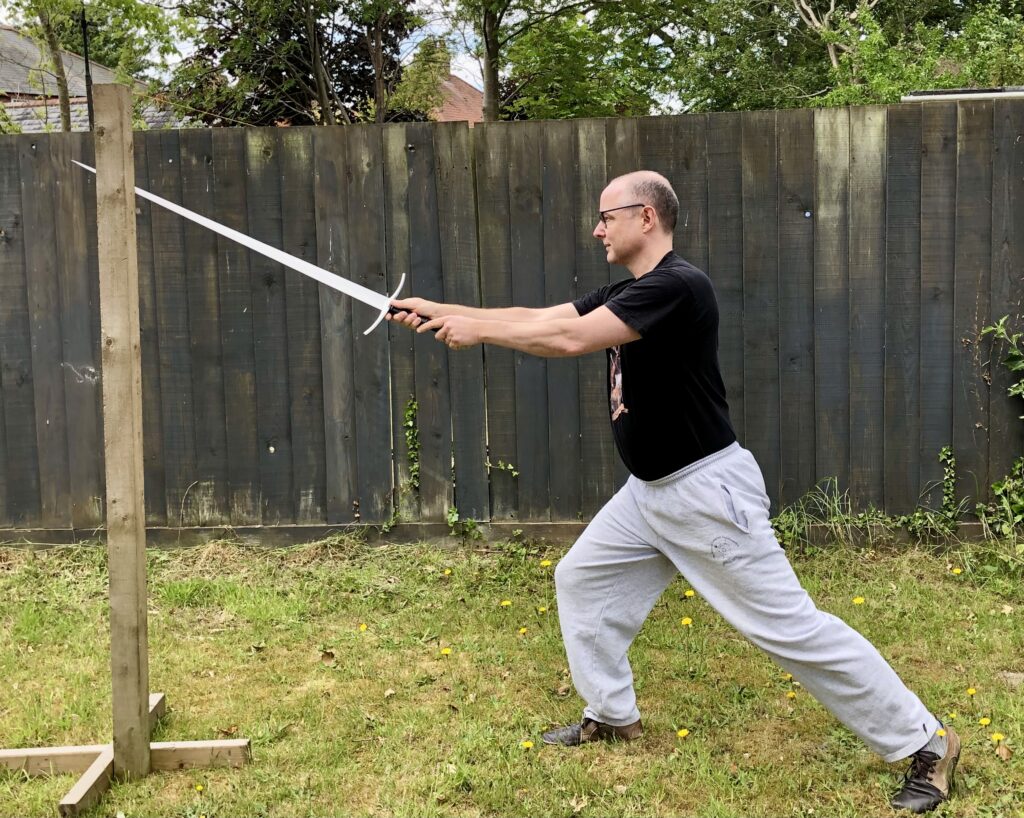Table of Contents
ToggleEntering the Fray with Vigour
One of the benefits to running an intermediate level class first thing every Monday evening, is that I get to put the seniors under a bit of pressure, make them work outside their comfort zones, and see what cracks. If a classful of students have difficulty with the same thing, it's a pretty clear indication that their training is at fault.
This occurred recently, when saying goodbye to a well liked and respected student who was returning home to Germany. Goodbye Swordschool style generally involves a bit of violence, and in this instance we had him face the entire class one at a time, such that they entered measure and attacked, and he just had to defend himself. Over and over again
We call this drill Holding the Field.
It became abundantly obvious very quickly that most students had no clue about entering the fray (or entering measure) in style. They could walk up, set themselves in guard, and launch, and God knows they can bugger about on the edge of measure forever. But marching forward swinging a sword and be in the right place to attack without pause, and without creating a tempo in which the defender could reasonably enter, was beyond them. Clearly, there was a gap in the basic syllabus. So I immediately created a set of drills to fix it. They are:
Three ways to practise entering the fray
1) On the pell: start from way out of measure, i.e. from across the salle, and enter smoothly, with full blows, moving only forwards, and arrive in the right measure with the right movement to strike the pell in perfect control (of course). This puts a strain on the imagination, and requires constant tiny adjustments to familiar movements to be in exactly the right spot to strike.
2) Add a step before step one of a basic drill. So, the defender stands still and waits, the attacker normally starts from a set guard. In this version, he has to precede the attack with a pass into measure with a blow that chambers the actual attack (e.g. the attack is mandritto fendente; chamber it with a roverso fendente). Once this sort of thing is comfortable, we must guard against false times and creating tempi for the enemy, and so the defender can strike if the chambering action leaves the attacker open.
In practice this means chambering with an action that is differently timed to a normal strike, in which the sword is at maximum extension as you arrive in measure. That would leave you standing still with the sword leaving the centre, in measure- a gift to the opponent. So instead the sword tends to travel past its maximum extension earlier, so as you arrive in measure it is coming back to the centre.
3) Add a step before step 2 of a basic drill: so the defender steps into measure with a blow that creates the starting defensive guard of the drill: the attacker uses that motion as his tempo to strike. So the defender has to be able to enter measure and respond to the attacker's attempt to take time on him.
This can all be done with other weapons, but its natural home is the longsword. This also prefigures the use of assalti in the Bolognese system, which can serve as set ways to enter boldly to the fray. You can just walk up to someone and start the fight, but it is psychologically advantageous to do so boldly, dramatically, and hopefully terrify them into immobility by your martial vigour. And now we have a way to practice that.
The key idea is to get away from static drill openings, and into a more dynamic way of training.
Update: this blog post was the initial stimulus to my “Who Moves First” multiplier, familiar from The Medieval Longsword: a training manual and others of my works.



4 Responses
One drill I use is to have the students start a good distance apart and walk towards each. They freeze when they feel they are in correct weapon measure (or when I yell “freeze”, and call out which hand and foot are forward, for themselves and the opponent. I then have them walk forward and try to hit measure with a specific foot forward. I progress from there until I have them spiralling in with swords and trying to arrive at measure in certain guardia, and trying to do so while the opponent is in the correct opposing guardia for the technique I want them to work on.
Interesting! As was your http://boxwrestlefence.com/blog/2012/07/27/sorry-was-this-your-knife/ post.
Thanks! I had fun writing it. I would say I had more fun in the class, but I got to be the dummy for all the handcuffing drills afterwards. Ouch.